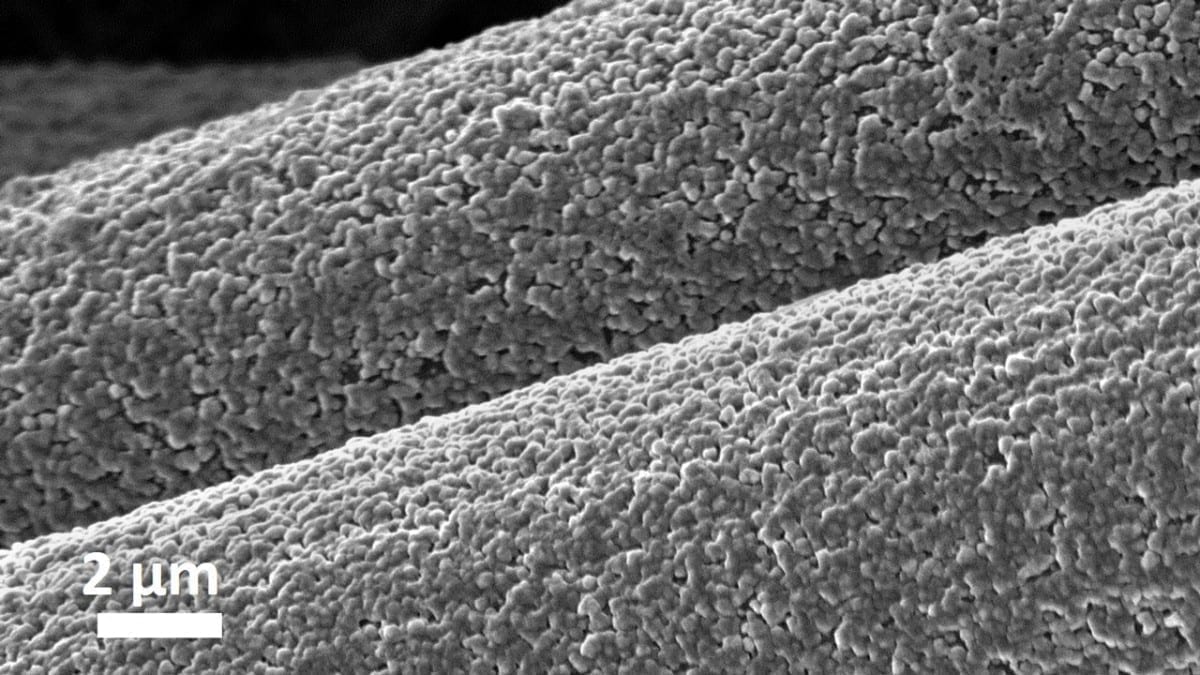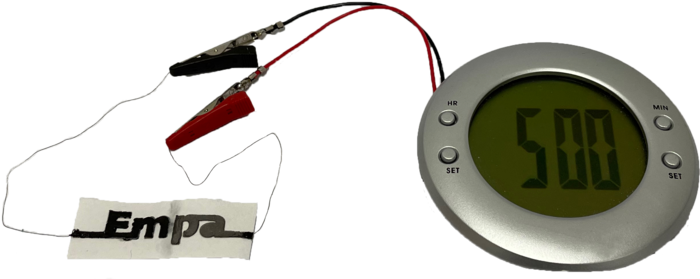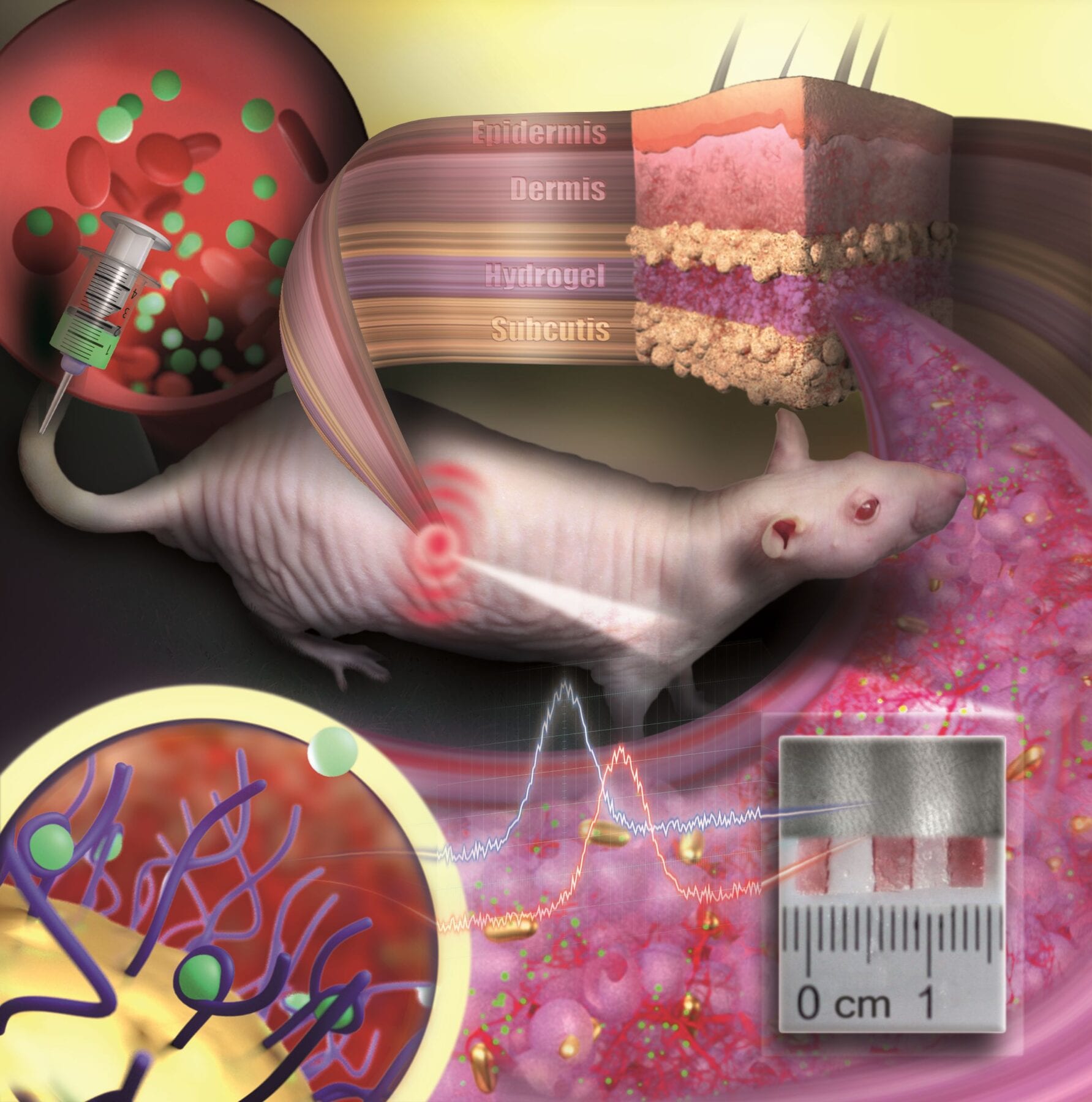
The cost of harvesting solar energy has dropped so much in recent years that it’s giving traditional energy sources a run for their money. However, the challenges of energy storage – which require the capacity to bank an intermittent and seasonally variable supply of solar energy – have kept the technology from being economically competitive.
Cornell researchers led by Lynden Archer, the Joseph Silbert Dean of Engineering and the James A. Friend Family Distinguished Professor of Engineering, have been exploring the use of low-cost materials to create rechargeable batteries that will make energy storage more affordable. These materials could also provide a safer and more environmentally friendly alternative to lithium-ion batteries, which currently dominate the market but are slow to charge and have a knack for catching fire.
The group previously demonstrated the potential of zinc-anode batteries. Now, they have employed a different approach for incorporating aluminum, resulting in rechargeable batteries that offer up to 10,000 error-free cycles.
Their paper, “Regulating Electrodeposition Morphology in High-Capacity Aluminium and Zinc Battery Anodes Using Interfacial Metal–Substrate Bonding,” published April 5 in Nature Energy.
The paper’s lead author is Jingxu (Kent) Zheng, Ph.D. ’20, currently a postdoctoral researcher at the Massachusetts Institute of Technology.
“A very interesting feature of this battery is that only two elements are used for the anode and the cathode – aluminum and carbon – both of which are inexpensive and environmentally friendly,” Zheng said. “They also have a very long cycle life. When we calculate the cost of energy storage, we need to amortize it over the overall energy throughput, meaning that the battery is rechargeable, so we can use it many, many times. So if we have a longer service life, then this cost will be further reduced.”
Among the advantages of aluminum is that it is abundant in the earth’s crust, it is trivalent and light, and it therefore has a high capacity to store more energy than many other metals. However, aluminum can be tricky to integrate into a battery’s electrodes. It reacts chemically with the glass fiber separator, which physically divides the anode and the cathode, causing the battery to short circuit and fail.
The researchers’ solution was to design a substrate of interwoven carbon fibers that forms an even stronger chemical bond with aluminum. When the battery is charged, the aluminum is deposited into the carbon structure via covalent bonding, i.e., the sharing of electron pairs between aluminum and carbon atoms.
While electrodes in conventional rechargeable batteries are only two dimensional, this technique uses a three-dimensional – or nonplanar – architecture and creates a deeper, more consistent layering of aluminum that can be finely controlled.
“Basically we use a chemical driving force to promote a uniform deposition of aluminum into the pores of the architecture,” Zheng said. “The electrode is much thicker and it has much faster kinetics.”
The aluminum-anode batteries can be reversibly charged and discharged one or more orders of magnitude more times than other aluminum rechargeable batteries under practical conditions.
“Although superficially different from our earlier innovations for stabilizing zinc and lithium metal electrodes in batteries, the principle is the same – design substrates that provide a large thermodynamic driving force that promotes nucleation; and runaway, unsafe growth of the metal electrode is prevented by forces such as surface tension that can be massive at small scales,” said Archer, the paper’s senior author.
Original Article: Aluminum-anode batteries offer sustainable alternative
More from: Cornell University | Massachusetts Institute of Technology
The Latest Updates from Bing News & Google News
Go deeper with Bing News on:
Aluminum battery
- China’s aluminum alloy ingot import and export data in March 2024
Driven by optimism over prices and orders, traders placed many new import orders in January, and these cargoes arrived in March.
- Revive your TV remote with aluminium foil. A simple battery fix
Aluminium foil boasts a plethora of uses beyond the kitchen. Few know it can become a handy ally when your TV remote stops cooperating. The solution? Place it strategically. The versatility of ...
- iPhone 16 vs iPhone 15: All the expected differences
For context, the iPhone 15 runs on the A16 Bionic chip, while the iPhone 16 is expected to be the first vanilla iPhone model to use a 3nm processor. This new chipset could be called the Apple A18 ...
- This swirly power bank might be the most sustainable battery pack on the planet
Gomi makes power banks from recycled e-bike batteries and plastic bags, with excellent repairs, for peak sustainability.
- Innovative nanocoating shown to significantly enhance battery casing fire resistance
Science X is a network of high quality websites with most complete and comprehensive daily coverage of the full sweep of science, technology, and medicine news ...
Go deeper with Google Headlines on:
Aluminum battery
[google_news title=”” keyword=”aluminum battery” num_posts=”5″ blurb_length=”0″ show_thumb=”left”]
Go deeper with Bing News on:
Aluminum-anode batteries
- Batteries News
Apr. 9, 2024 — An improved charging protocol might help lithium-ion batteries to last much longer. Charging with a high-frequency pulsed current reduces aging effects, an international team ...
- Single-walled carbon nanotubes doped with 'nitrogen' enhance the performance of secondary battery anode
Researchers have developed a new manufacturing technique for "silicon/nitrogen-doped carbon composite anode materials." These materials aim to enhance the capacity and stability of lithium-ion battery ...
- Tesla co-founder JB Straubel has built an EV battery colossus
His battery-recycling company, Redwood Materials, is producing a key component in EV batteries, aiming to shift supply chain from China.
- lithium anode battery
Hypertext is one of South Africa’s leading technology news and reviews sites. We publish original content daily for consumers and businesses. All original words & media by Hypertext by htxt ...
- SiAT Partners with Zeon to Launch Innovative SWCNT Conductive Paste, Enhancing Battery Fast Charging and Energy Density
In battery cathode/anode formulation, only 1/20 additive of SWCNT conductive ... CNT conductive paste, LMFP paste, CNT-coated aluminum foil.
Go deeper with Google Headlines on:
Aluminum-anode batteries
[google_news title=”” keyword=”aluminum-anode batteries” num_posts=”5″ blurb_length=”0″ show_thumb=”left”]










